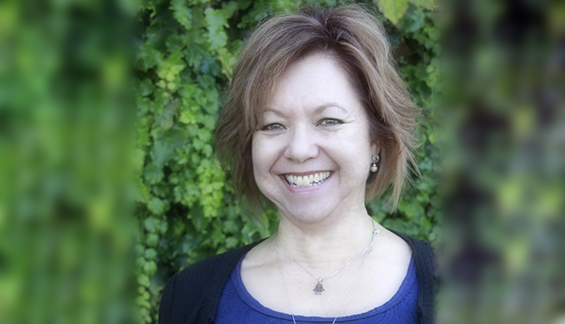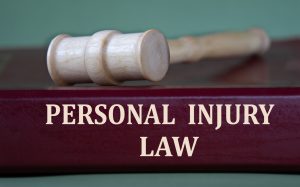How does workers’ compensation work?
The California workers’ compensation system is constitutionally mandated in the state constitution. It’s a contract between the workers and the employers of California. Injured workers are provided with “comfort, health and safety and general welfare…to the extent of relieving from the consequences of any injury or death incurred…in the course of their employment” by employers. In return, injured workers are precluded from suing employers for work-related injuries.
Basically, an employee must report a work-related injury as soon as possible to a supervisor. They must be offered a form called a DWC-1 to initiate filing a claim and medical treatment within 24 hours. Obviously, if it’s urgent, they should be provided medical treatment immediately. Treatment is provided by an employer-designated physician, with certain exceptions. After 30 days, the injured worker may transfer treatment to another physician if they wish to; however, that physician must be within the employer’s “managed provider network” of treating physicians.
One important deadline for injured workers to know is that if a claim is denied, they have one year from the date of denial to file an Application for Adjudication with the Workers’ Compensation Appeals Board, where administrative hearing judges preside, located in the county where they reside, their employer is located, or where their attorney is located. Our office is located in Santa Rosa and we represent clients in Sonoma County, Marin County, Mendocino County, Napa County, and Lake County.
Death benefits may be payable to the dependents of a deceased worker.
In general, what can be covered by workers’ compensation?
Five types of benefits can be covered by workers’ compensation. First, and most crucial, is medical treatment; second, temporary disability benefits compensate an injured worker for loss of pay when they are unable to return to their usual and customary work duties; the third is vocational rehabilitation benefits- however, for injuries after 2013, these are limited to a $6,000 voucher for training and up to $5,000 in cash from the state’s Return to Work Fund, subject to certain regulatory requirements. The fourth benefit is permanent partial disability payments once an injured worker has reached a point of “maximum medical improvement” and receives a disability rating by a physician. Fifth and finally, death benefits may be payable to the dependents of a deceased worker.
Third-party cases typically involve someone other than an employer; for example, another driver in a work-related motor vehicle accident.
What are employees to do when workers’ compensation is not enough?
Honestly, workers’ compensation is never enough. Temporary disability benefits only last 104 weeks. If a client requires surgery, this time runs down quickly. We refer our injured workers to the Employment Development Department (EDD) to apply for State Disability Benefits (SDI). SDI benefits are limited to 52 weeks and by the amount that was contributed from the paycheck of the injured worker during the five to 18 months prior to the date of injury.
A study done by the Job Accommodation Network found that an injured worker is 50% less likely to return to work after the 12th week of leave. Many of my clients are out much longer than that. If I see that a client has been out of work at least a year and is still not getting any better, I may advise them to consider applying for Social Security Disability Insurance and will refer them to an attorney who practices in that area.
The California Applicant Attorney Association’s Women’s Caucus put together a Community Resource Guide (CRG) that contains resources for every county in the state. Those resources include financial assistance, housing assistance and transportation assistance. I often print out resources from the CRG for our clients to help them access food stamps and temporary financial assistance to pay utility bills and rent.
What is a third-party lawsuit? How are they different in these situations?
Third-party cases typically involve someone other than an employer; for example, another driver in a work-related motor vehicle accident. When we meet with new clients, we review the facts of their cases to ascertain whether there is a third-party civil action outside the realm of workers’ compensation. Several of my third-party cases are sexual harassment cases and sexual assault cases. When an employer commits a tort against an employee such as sexual harassment and sexual assault, it’s both a workers’ compensation case and a civil case. Most of my third-party cases are referrals to me by civil attorneys, so that we can work together towards the best interest of our client in both the workers’ compensation case and the third-party case.
[ymal]
What are common issues you are faced with in workers’ compensation law?
I face two common issues in this area of law. The first is getting my clients medical care. Ninety nine per cent of the time the reason someone walks through our door looking for representation is because they cannot get medical care. The second is inequality. We see gender bias, racial bias, and age bias in workers’ compensation. It’s in medical reporting, it’s in the treatment of our workers within the system.
How do you overcome them?
We have outstanding support staff. We are all dedicated to getting our clients the medical care they deserve. As well as with identifying bias issues in the workers’ compensation system. They have established protocols that provide us with the documentation and evidence we need if we have to go to a hearing to enforce the need for medical treatment. As an example of how they help overcome bias issues: because of our team, I was able to put together evidence to try and win a case that enforced the rights of Spanish speaking clients to receive crucial workers’ compensation notices in their primary language. It was one step of many towards meaningful change.
Contact Info:
Laura Chiyono Rosenthal
Attorney at Law
Certified Specialist, Workers' Compensation Law
The State Bar of California Board of Legal Specialization
Law Office of Richard J. Meechan
P.O. Box 369
Santa Rosa, CA 95402
www.servinginjuredworkers.com/
My Role in the Legal Industry
My career as an attorney began when I was sworn in June 2013. However, I had almost three prior decades of practical legal experience, beginning as a legal typist in a “typing pool” in the early 1980’s when I was still in college. My other legal experience includes working as a paralegal, a private investigator, a law librarian, and a paralegal program instructor. I’ve been with the Law Office of Richard J. Meechan since September 2013, where I practice in the area of workers’ compensation law. I also provide assistance with disability retirements for my law enforcement clients. My prior decades of practical legal experience provide the foundational skills needed as an attorney in discovery, legal research, client contact, and pre-trial preparation.
The Challenges I Faced
Even though I had a strong background and was comfortable in a law office, when I began working as an attorney, I was very nervous about court appearances and depositions. However, I had – and still have - a great mentor, Rick Meechan. Because of him, I am on the Board of Directors of the California Applicant Attorneys’ Association (CAAA) and attend its twice-a-year educational conventions. I am a member of several CAAA committees. Most important to me is the Women’s Caucus, which formed the same year that I began practising law. As a member of Women’s Caucus, I have gained friendships with women practitioners like me statewide. I have also gained invaluable experiences, such as testifying at California state senate and assembly hearings and speaking at conferences and conventions about gender bias in workers’ compensation.
My Favourite Aspect of my Role
I enjoy my work: I like my clients and I work with the best people on earth. My favourite role is that of “counselor at law,” because I like listening to my clients and learning about their work and their lives. In November 2018, I was certified by the California Board of Legal Specialisation of the State Bar of California as a specialist in workers’ compensation law. I sort of fell into workers’ compensation law, but I couldn’t have fallen into a better place.





















